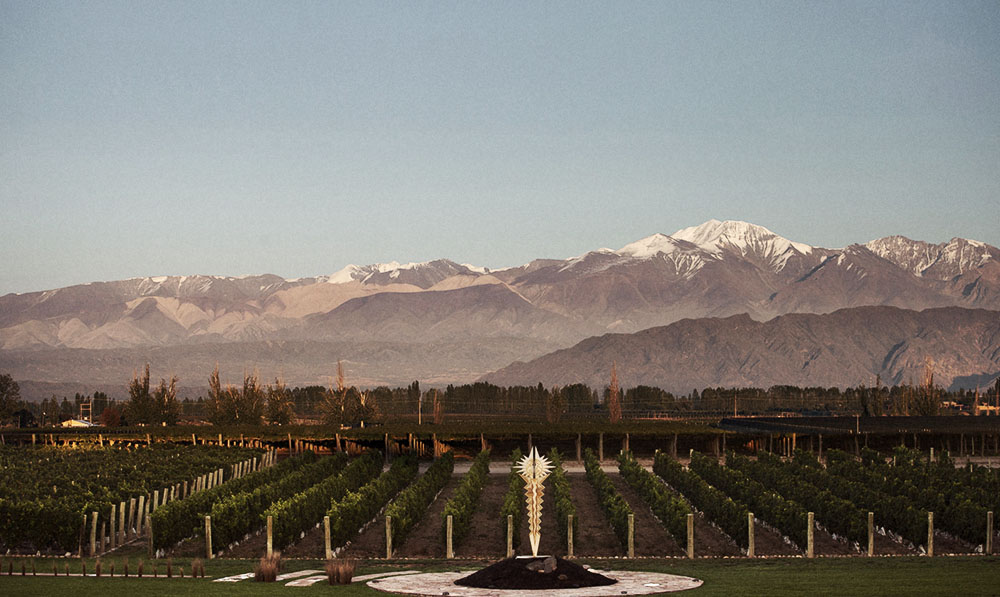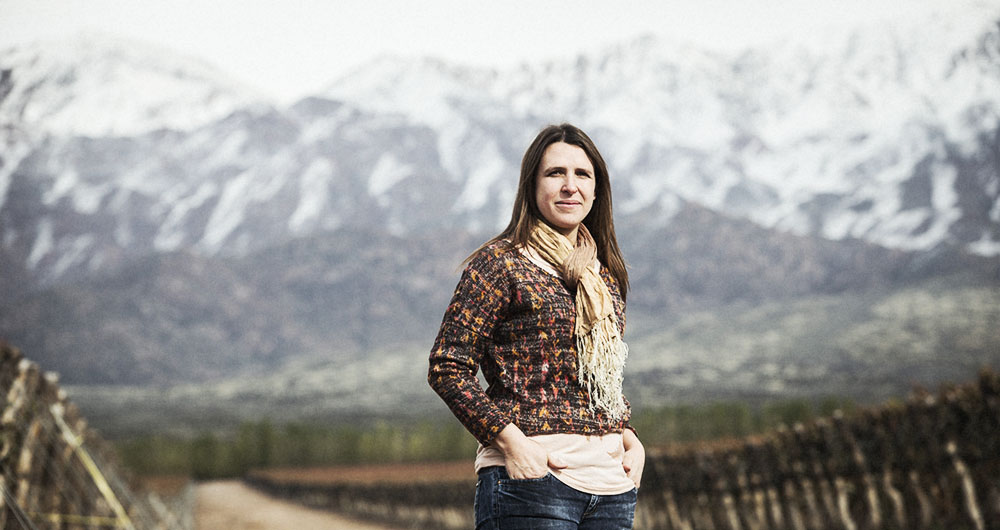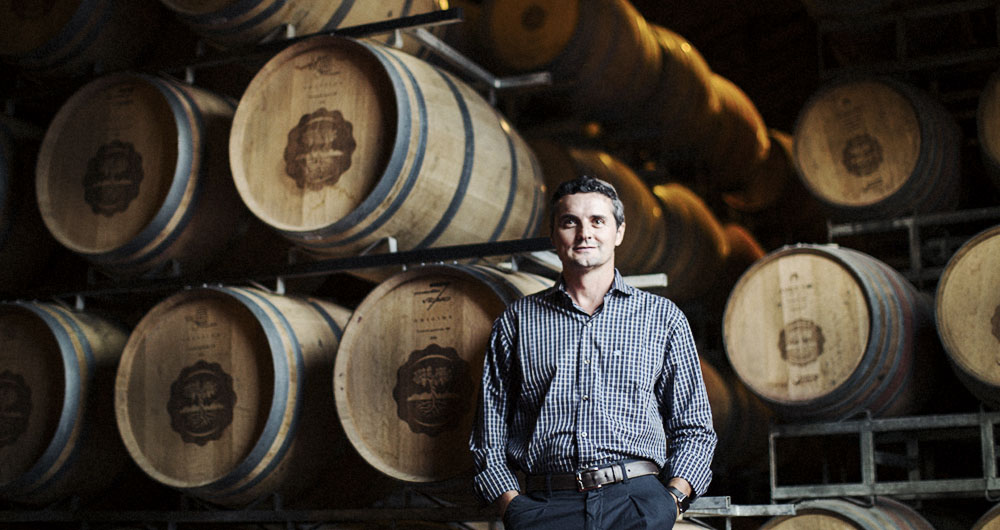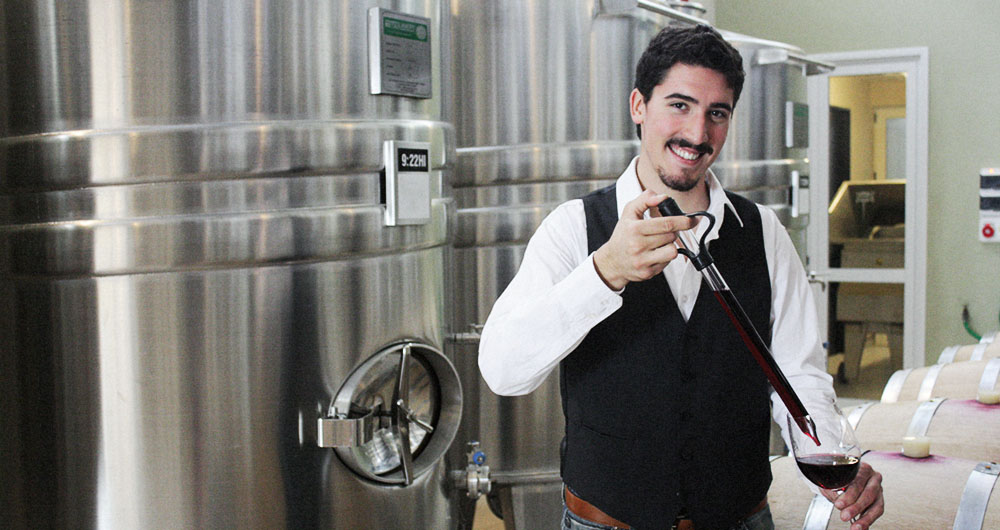
The new Argentinian red wine revolution
By Tod Stewart
“Do one thing really well.”
It’s a mantra that some have built careers on. Like those sushi masters who are so committed to their craft that they spend years just learning how to properly prepare rice before they are even allowed to look at a fish. Such commitment takes patience, to a level that would result in most of us actually being committed.
The wine world has its own specialists. If you’re practising viniculture in France’s Cȏte-d’Or region, for example, you’ll be specializing in making white wines from Chardonnay and reds from Pinot Noir. You’ll be doing this because you know these varieties make some of the most coveted wines in the world. And because French wine laws won’t allow you to grow anything else. Which is why many Old World winemakers look with some degree of envy at the flexibility typically provided to New World producers when it comes to decisions on what to plant.
Winemakers in places like, say, Argentina, face far fewer restrictions than their French counterparts when it comes to what grapes to plant and, indirectly, what style of wine to make. Yet, in spite of this, most wineries that have reached a level of international success have done so with wines made with pretty much the same grape: Malbec. As the representative grape of a country’s wine industry, Malbec is a bit of a curious choice. Even in its native France, and in any region outside of Cahors, it’s barely given any consideration. Be that as it may, Argentina’s winemakers have embraced the variety and proven that, by choosing optimum vineyard locations — typically at fairly high elevations — and experimenting with clonal variations, truly fine wines can be realized.
While many winemakers — especially those in the Mendoza region — are content to refine their Malbec-based wines, others are setting their sights on other varieties planted in different soil.
“We are sure that we can show there is much more Argentina can offer than just Malbec,” asserts Julián Iñarra Iraegui, Commercial Director for Proemio Wines. “The region we are in — Maipú — from my understanding, is the best region for growing Cabernet Sauvignon. We also make wines from Petit Verdot, Syrah and Grenache, and Cabernet Franc.” Iraegui says that what Proemio is looking to do is “deconstruct and reconstruct” classic French blends, offering wines that are both single-varietal expressions and blends featuring those same grapes. He says the winery’s style is “more French.”
“We avoid over-extraction and the heavy use of oak. We import our barrels from France, and we are also using some barrels that are made from tree branches rather than trunks. We are the first winery to use these in Argentina.”
Tasting through a range of Proemio wines with Iraegui, I’m impressed by the complexity, poise and refinement of the wines crafted by French-thinking (though of Italian descent) Marcelo Bocardo. “Marcelo loves blends,” Iraegui confirms when asked whether Malbec might be better as part of a blend than as a single varietal.
Though the winery makes a couple of 100 percent Malbec wines, Iraegui admits that the winery “loves Cabernets.”
Indeed, the Proemio Cabernet Sauvignon Reserve 2016, with its aromas of tobacco, blackcurrant, mint, pepper and dark plum, more than adequately showed the potential of this grape variety. Juicy and dense, it was nonetheless perfectly balanced and elegant, with a hint of spice intermingling with the chewy cassis fruit. However, things got really interesting (at least for me) with the pouring of two award-winning Proemio blends.
The Gran Reserve 2014, a mix of 50 percent Malbec and 40 percent Cabernet Sauvignon (the remainder being Syrah and Grenache) delivered a master class in sophistication, with smoky, rich dark berry and violet-tinged aromatics giving way to intense, graphite-laced black fruit nuances. Upping the ante another notch, the Icono 2013 displayed a captivating flavour tapestry that seamlessly wove together mint/menthol, liquorice and hints of black pepper with complex layers of blueberry, camphor and blackberry. Proof of the viability of grape blends — and of Bocardo’s skill in crafting them — could easily start, and end, with this wine.
Martin Palacio, Export Manager for the La Riojana co-operative, is also a “believer” when it comes to colouring outside the 100 percent Malbec lines — and outside of Mendoza’s boundaries. Touring Canada along with winemaker Leonardo Mauricio Manzano, he’s here to promote La Riojana’s new Believer line of wines that are crafted in the La Rioja region 600 kilometres northwest of Mendoza.
“We look at the sales statistics for the Argentina category in Canada and see Malbec, Malbec, Malbec, Cabernet Sauvignon. [And] maybe a few Malbec/Cabernet Sauvignon blends,” Palacio confirms. “But you don’t find, for instance, a Malbec Syrah. Malbec Syrah is an excellent blend.”
Manzano points out that Malbec certainly has power and backbone, but in marrying it with Syrah, you enhance the aromatics and overall structure, boost the complexity and showcase the characteristics of the fruit rather than simply the impact of oak.
Indeed, the Believer Organic Red is certainly fruit-forward, with bright black cherry/liquorice/toasted nut aromas and a plush, ripe palate of Morello cherry and suggestions of nougat.
Another grape Palacio places a lot of faith in, particularly for blends, is Bonarda. Though it’s Argentina’s second most widely planted black grape variety, it’s basically unknown to most consumers outside Argentina — at least in comparison to Malbec. However, if you happen to be Katarina O’Reilly-Ryan or Gord Ryan, you definitely have a strong interest in seeing Bonarda get more exposure. The couple’s introduction to the world of wine — and to Bonarda — is about as “fairly tale” as things get in the real world.
Both Newfoundlanders, they decided, in 1999 to take a break from the norm and do some travelling. These travels took them all over Australia and New Zealand, and eventually to a family-owned vineyard in Australia’s famed McLaren Vale. Practically immediately, the couple decided to pursue wine as a career. On their way back to Newfoundland, they stopped on Vancouver Island … and stayed there. However, as much as they wanted to invest in a winemaking operation in British Columbia, a number of factors sent them searching elsewhere.
That search ended in 2009 when they purchased a vineyard in Argentina, about two hours south of the city of Mendoza. Then owner, Carlos Gomez Bourras, and Ryan connected over a vision of creating top-calibre wines. In 2011, the first vintage was produced under the Chayee Bourras label. All well and good (and pretty amazing when you think about it), but why Bonarda in the heart of Malbec country?
“Why Bonarda? In our case, the Bonarda vines were the oldest on the property when we purchased the vineyard,” O’Reilly-Ryan reveals. “It grows the best in the world in Mendoza, but especially in San Rafael. And, in our humble opinion, it produces some of the finest wine to come out of Argentina. It is our firm belief that Bonarda will surpass Malbec as far as interest and sales in the not too distant future. I’d bet on it!”
Probably a decent bet if the Chayee Bourras numbers are any indication. The Chayee Bourras Bonarda 2013 is jammed full of mineral-tinged bramble, bright strawberry and floral aromas and flavours. The Chayee Bourras Bonarda Reserva 2012 ups the ante considerably in terms of smokiness, weight and overall complexity. It may be stretching things to say that it’s the regular Bonarda on steroids, but the additional six months’ aging in French and American oak — and the 14.5 percent alcohol level — certainly adds power and density. Great packaging on both wines to boot!
Does all the interest in new varietals and blends mean that Malbec is destined to be “yesterday’s grape,” in the eyes of Argentina’s vignerons? Unlikely. Marcos Fernandez, winemaker from Mendoza’s Doña Paula winery, feels that Malbec will remain important and will continue to refine itself.
“The focus on Malbec really started in the late 1990s and continues today,” he informs. “But now, many young winemakers are crafting a new style of Malbec. This change in style started a few years ago, and now we can offer great Malbec wines from high-altitude vineyards that are very fresh, with excellent, vibrant acidity and without intervention from oak aging. The next step, in my opinion, is to keep focusing on the new-style Malbecs, as well as the great Cabernet Francs from Uco Valley, and also Petit Verdot and Bonarda from Luján de Cuyo.”
Fernandez’s Doña Paula 1350 Red Blend 2015 — which combines Cabernet Franc, Malbec and Casavecchia fruit sourced from vineyards situated 1350 metres above sea level — certainly shows the beauty of blends, with super-intense aromas of smoky, tarry violet, dark chocolate and wet slate that give way to a dense, chewy palate with enough balanced tannin to reward considerable aging.
From what I’ve been tasting lately, the new Argentinian red wine revolution is just beginning.
The Notes
Alamos Cabernet Sauvignon 2018 ($16)
A Mendoza Cabernet Sauvignon that shows a typical cassis/blackberry nose with a hint of vanilla/oak. Quite rich, round and balanced in spite of its relative youth, it tails off with a dash of pepper along with some lingering, sweet blackberry undertones.
Amalaya Malbec 2017 ($18)
Labelled as Malbec, it actually combines 85% Malbec, with 10% Tannat and 5% Petit Verdot. Interesting. Prominent blueberry aromatics, with earthy/smoky/mineral suggestions, it’s mid-weight, with black raspberry flavours, enhanced by mineral notes.
Argento Cabernet Franc 2016 ($19)
Aromatically, this 100% Cabernet Franc delivers full-on blackberry, white pepper and some mild earthy/leather notes. Fairly subtle in the mouth, with restrained black raspberry and mineral flavours.
Callia Alta Cabernet Sauvignon 2018 ($14)
This Cab from the Tulum Valley in the province of San Juan clocks in with a retail price in Ontario of under 10 bucks. Frankly, I wasn’t expecting much. What I got pleasantly exceeded expectations. Bright floral, menthol, graphite nuances segue into a layered and balanced flavour profile with some rich, mildly spicy dark fruit and traces of cigar box.
Catena Cabernet Sauvignon 2017 ($20)
This Mendoza Cab from one of the country’s legendary winemakers delivers forward aromatics suggesting cocoa powder, graphite, smoke and dried herbs. Rich, robust, chewy and dense, with loads of ripe blackcurrant flavours laced with dried herbs, milk chocolate and mint. Long finish.
Condor Peak Cabernet Sauvignon Reserve 2017 ($15)
Classic Cabernet Sauvignon aromas of blackberry, coffee bean, leather and some subtle spice distinguish this Mendoza example. Soft, supple and easy-drinking. Maybe not packed with complexity, but with a price tag of just over 10 bucks in some markets, it certainly delivers more than what you pay for.
Kaiken Ultra Cabernet Sauvignon 2017 ($20)
Those who like their red wines big and bold will certainly gravitate to this muscular — and still youthful — Cabernet Sauvignon. Though the sweet tannins are evident, the overall balance is indisputable, with layers of opulent, super-ripe chocolate-coated cherry flavours swirling around and surrounded by minty/mineral/cassis nuances.
La Celia Malbec Cabernet Franc Reserva 2017 ($15)
Eugenio Bustos, having brought the first Malbec vines to Mendoza’s Uco Valley, founded La Celia winery in 1890. This Malbec Cabernet Franc blend sports an intensely fruit-forward, black cherry/blueberry jam nose, combined with coffee bean, new leather and nutmeg. Supple in the mouth, with flavours that mimic the wine’s aromas.
Masi Corbec 2015 ($25)
A blend of Corvina and Malbec from the Uco Valley fermented using Masi’s double-fermentation appassimento method. The resulting wine is powerful without being over-the-top or gloopy. There’s a whiff of nutmeg and cinnamon among the dark plum, cedar and eucalyptus notes. Lots of depth and ripeness in the mouth, it nonetheless sports a certain elegance.
Norton Privada Family Blend 2016 ($25)
A blend of Malbec, Cabernet Sauvignon and Merlot sourced from 50- to 90-year-old vines in the Luján de Cuyo area. Chocolate-covered cherries on the nose, with a smattering of blueberry, cocoa powder, thyme and bay leaf. Elegant and balanced in the mouth, the flavours are redolent of current jam and mocha, with a slight smokiness.
Salentein Numina Gran Corte 2015 ($40)
Comprised of 68% Malbec, 12% Cabernet Sauvignon, 8% Cabernet Franc, 7% Merlot and 5% Petit Verdot. Three French hens, two turtle doves and a partridge in a pear tree. Sorry, couldn’t help it. Anyway, all this fruit is sourced from the El Oasis estate, which rises between 1,080 and 1,200 metres above sea level. In any case, it all works. It’s relatively complex nose displays leather, cassis, bramble, vanilla bean and some char/tar elements. It’s elegant, balanced, complex and concentrated, with saturated black fruit nuances.
Septima Cabernet Sauvignon 2017 ($18)
A fairly powerful Mendoza Cabernet that offers up plenty of saturated dark berry aromas enhanced with some herbal/earthy notes and just a whisper of lead pencil, leather and toasty/spicy oak. Mid-weight and full-flavoured, with nice interplay between ripe fruit, a slight earthy/smokiness and well-integrated tannins.
Wapisa Cabernet Sauvignon 2016 ($20)
A Patagonian Cabernet from the Los Acantilados Estate planted close to the Atlantic Ocean. Forward currant fruit combines with some savoury/herbal/anise undertones. Poised and quite refined, with well-integrated tannins, a mid-weight profile and flavours suggesting slightly earthy, mineral-tinged blackberry/plum jam, with hints of dried herbs.
Zuccardi Q Cabernet Franc 2017 ($19)
Many of Argentina’s winemakers are championing Cabernet Franc as the “next thing” in the country’s red wine evolution. Zuccardi’s Q version certainly lends credence to the grape’s potential. Characteristic bell pepper scents intermingle with coffee bean, eucalyptus/menthol and fresh cherry. Delicately spicy, it delivers fresh acidity, velvety tannins and bright, vibrant red fruit.



